Pocketgamer:观察家评十大最具收购价值的手机游戏公司
日本DeNA公司以4亿多美元将Ngmoco公司收编一事终于落幕,联想到近几年游戏产业收购潮一波未平一波又起的现象,不禁让人猜测哪家公司会成为下一个收购对象,以下是笔者推选的十家最值得收购的手机游戏公司:
1.Backflip Studios(估值:约5000万美元)
这家公司是2010年表现最抢眼的选手之一,其免费iOS游戏下载量已近5000万次,主要营收来源包括游戏植入广告(iAd和AdMob),以及通过免费游戏交叉促销的付费游戏。
值得一提的是,该公司发行的《Strike Knight》或《Graffiti Ball》免费游戏的下载量均已超400万次,其iOS游戏的日活跃用户也突破了200万,目前刚开始面向Android平台投放游戏。可以说Backflip是一家规模小,运营灵活,利润高的公司。
2.Chillingo(估值:约1亿美元)
这家英国公司自2008年以来就一直是最活跃的iOS游戏发行商,更重要的是,该公司所推出的游戏质量也在不断提高,在玩法和内容上均有突破,这方面的代表作就是其最近发行的《死海冲浪之旅》(Billabong Surf Trip)和《Numb3rs》(根据美国CBS电视剧所改编的同名侦探游戏)。
与其他发行商不同,Chillingo公司从来不公布自己的游戏下载量,只知道其发行的热门iOS付费游戏《愤怒鸟》(Angry Birds,由芬兰Rovio公司开发),今年销量预计将达1000万份。
如果真被收购,该公司运营的手机社交游戏平台Crystal也将为其增值,尽管该平台出道较晚,缺少强有力的游戏后盾,但其稳定的框架、出色的用户界面以及丰富的免费游戏,也是不容忽视的优势。
唯一潜在的不利因素可能是Chillingo与其开发商协定的相关条款,包括哪一方拥有该公司所发行游戏的IP,以及Chillingo对非iOS游戏的附属权利等细节的讨论。
3.Scoreloop(估值:约5000万美元)
与OpenFint和Plus+等竞争对手不同,Scoreloop这家德国社交网站公司主要以B2B商业模式取胜。
Scoreloop手机游戏平台最初面向Android用户,后来扩张到了MySpace、三星bada平台,并计划出击平板电脑和网络电视,直接与手机运营商合作。
从消费面上来看,开发商和Scoreloop公司的最大机遇在于该平台推出的虚拟货币“Coins”,玩家可以通过完成游戏任务或者使用现金购买这种虚拟货币。不过,这种模式创造营收的前景并不被看好,因为这种手段需要以数量取胜,而且还得有炉火纯青的功力提高游戏营收转化率,才能玩得转Android等其他新兴市场领域。
4.Rovio Mobile(估值:2500万美元)
尽管这家芬兰开发商的手机游戏制作历史已经有些年头,但《愤怒鸟》才是真正令其名声大噪的代表作。虽然这款iPhone排名第一的游戏仅售价99美分,而且也没有像Rovio董事会所想象的那样让Rovio一夜暴富,但《愤怒鸟》推出才一年盈利就破600万美元,也确实取得了不俗的成绩。
如果Rovio想大量吸金,就得向更多的平台投放《愤怒鸟》,而且要赶在其他游戏追上来之前尽快提价,避免重蹈《涂鸦跳跃》(Doodle Jump)被《愤怒鸟》从iOS游戏冠军宝座上轰下来的复辙。
另外,向Xbox Live、PlayStation Network、Steam等平台发行游戏版本也很关键,虽然反复翻炒《愤怒鸟》看起来并没有那么大的长期价值。
5.GetJar(估值:2亿美元)
在各种应用商店如雨后春笋般地不断涌现,内容提供商和用户同时犯难,不知作何选择的情况下,应用发行仍然是非iOS平台开发商最需要操心的大事。从发行数量上看,GetJar是仅次于苹果App Store的全球第二大的应用商店,解决这一问题易如反掌,因为该平台的应用全部可以免费下载。
但这并不意味着GetJar无利可图,该应用商店有多种帮助开发商推广应用和游戏的商业模式,它可以从产品广告位、安装费用等渠道获利。
从世界范围来看,免费才是游戏和应用获得推广的王道。即使是最低价的付费应用也仍然不是理想的选择,如果拥有上千万的用户,依靠应用内置广告、微交易(无论是用哪种货币)也可以创造大量的营收。
6.Free App A Day(估值:5000万美元)
如果说应用发行是内容提供商的头等大事,那么第二桩大事当属应用曝光率。Free App A Day这家网站主要推广处于免费促销期的付费应用,可以提高应用被搜索的机率,至少在苹果App Store上很管用。
FAAD每日活跃用户超过100万,几乎每天推选出的5款游戏或应用都能进入全球前10款免费应用的行列。这种限时推广的商业模式为开发商和发行商创造了机遇,FAAD同时也可以从那些公司的营收中抽成获益。
免费促销可以怂恿玩家试玩游戏以后再付费下载,而原本就免费的游戏也可以采用这种模式,从FAAD的推广活动中提高知名度。
FAAD的这种推广模式目前正向iPad、Android和其他平台挺进,相信还将收获额外的优势。
7. Unity Technologies(估值:约1.5亿美元)
这家丹麦和美国游戏科技公司并非手机游戏公司,但其开发的Unity引擎工具在网页开发和安装系统上大获成功,随后在掌机、iPhone、Android等领域也取得重要突破。
该公司在手机游戏领域上很有作为,为上百款iOS和Android游戏提供技术服务,以及将覆盖WP7的跨平台技术支持,平板电脑、电视也在其服务范围内,在线游戏更是不在话下。
除此之外,其服务对象还包括电子艺届、育碧、LEGO这样的大型游戏发行商,以及可口可乐公司和NASA(美国国家航空航天局),其软件开发工具包的注册下载开发商超过20万人。
8.Polarbit(估值:约1500万美元)
这家瑞典工作室在游戏开发领域还并不怎么出名,但也在2010年悄悄地成长为最强势的开发商之一,向多个平台投放了大量质量优秀的游戏。
Polarbit取得如此成就,很大程度上归功于该公司强大的内部开发技术,该技术还帮助其他特许开发商,面向iOS、Android、Symbian、bada、DS、Wii、Antix Game Player、Brew、Java、Linux、webOS甚至是Zeebo掌机平台开发游戏。
另外,该公司在多人游戏上也很有成就,尤其是像《Raging Thunder》这种竞赛类型游戏,与EA Mobile、柯乐美(Konami)、Blukypix、Fabrication等开发商在现金流转、开发技术和IP使用上的合作也同样可圈可点。
9.Glu Mobile(估值:目前为止约3008万美元)
该公司首席执行官Niccolo de Masi今年1月份刚刚上任时,许多人认为Glu可以平稳着陆,因为这名CEO力图通过对智能手机游戏的投资,平衡其Java、Brew游戏销售的下滑趋势。
Niccolo de Masi颇有信心地控制了Glu公司在转型过渡时期的局面,近期刚从新老投资者中重新募集到了1350万美元,投入免费游戏运营模式。但从目前形势来看,该公司的股票仍然贬值。
10.Pocket Gamer网站(估值:待定)
看到这里,诸位一定忍不住发笑,认为这个想法好荒唐,Pocket Gamer怎能跟这一行的收购扯上关系呢。但是别忘了,新闻集团前不久还刚刚以6.5亿美元收购了IGN网站。
网站媒体在手机游戏行业中也发挥了重要作用,比如说为用户提供了资讯搜索、行业分析、开发商合作关系、策略报告、信息咨询、市场数据和内容整合等服务。
至少笔者认为,这几项服务在Pocker Gamer这里应有尽有,而且还向许多欧洲和美国网站提供了iPhone Alliance综合广告服务,我们网站收益确实还不赖。(本文为游戏邦/gamerboom.com编译)
Opinion: The ten next best acquisitions in mobile gaming
With DeNA’s massive $400-odd million acquisition of ngmoco confirmed (whatever the exact split of cash, shares and earnout), the next question for speculative journalists looking for headlines is -who’s next?
Taking a shotgun approach to the situation, here are ten mobile gaming companies I think are valuable in the current climate, together with some back of the envelope attempts at valuations.
1. Backflip Studios
This Colarado studio is one of the most consistently performing games companies in 2010. With almost 50 million downloads of its mainly free iOS games, it has demonstrated it can generate revenue either using in-app advertising (iAd and AdMob), or by cross promoting its paid games via its free games.
The result is that each of its free releases such as Strike Knight or Graffiti Ball have been downloaded over four million times. More importantly, Backflip has over two million daily active users across its iOS portfolio, it’s just started releasing games for Android, and it’s small, well run and highly profitable. Valuation: circa $50 million
2. Chillingo
Consistently the most active publisher on iOS since 2008, UK based Chillingo continues to release a lot of games. More significantly, the quality of these games is getting better, both in terms of gameplay, as well as the licences it and its developers are getting hold of. Recent examples of the latter include Billabong Surf Trip and CBS’ TV show Numb3rs.
Unlike other publishers, it’s never released any figures concerning its total number of downloads but its headline release Angry Birds, from Finnish developer Rovio, is likely to hit 10 million paid iOS sales in 2010.
Further sweetening the deal – and raising valuation – is Chillingo’s Crystal social gaming platform, which although the last of the big four to launch, makes up for its lack of supported titles, with a solid framework, great UI and a new focus on freemium games.
The only potential downside could be potential break causes in the contracts it has with developers should it be bought, as well as the minutiae of exactly who owns what IP in terms of the games it publishes, and Chillingo’s ancillary rights to non iOS releases. Valuation: circa $100 million
3. Scoreloop
Unlike rivals such as OpenFeint and Plus+, the German social networking company has taken more of a business to business approach with its eponymous technology.
It was the first to support Android, and has since expanded out, supporting MySpace, Samsung’s bada platform, and also has plans for tablets and internet connected TVs, as well as linking up directly with mobile carriers.
In terms of its consumer face, the opportunity for developers and Scoreloop itself is the company’s in-platform virtual currency Coins.
Players can gamble (win and lose) these in challenges, using real cash to buy more as and when they run out. As yet, it seems unlikely anyone is generating much revenue via this method, but it is a volume play, and one that should work well especially in otherwise hard to monetise situations such as Android and/or emerging markets. Valuation: circa $50 million
4. Rovio Mobile
The Finnish developer of Angry Birds has a long history of making games for mobile devices and other platforms but it’s been the number one iPhone game that has made it a household name, even if the game’s 99c price hasn’t made it rich beyond its board’s wildest dreams.
Still, $6+ million of effective profit from a single game over 12 months isn’t bad going. Yet for Rovio to be worth a lot of money, it will need to release Angry Birds on as many other platforms, and premium priced as quickly as possible before another game has the opportunity to take its crown, as indeed it did to previous iOS top seller Doodle Jump.
Getting versions released for Xbox Live, PlayStation Network, Steam etc is also important, although the longterm worth of the oft mentioned film seems marginal. Valuation: circa $25 million
5. GetJar
Distribution is perhaps the biggest issue for the non iOS world, with a multitude of app stores springing up to potentially confuse content providers and consumers alike. GetJar, which by volume is the second biggest app store globally after Apple’s App Store, solves that problem very easily – everything is available to be downloaded for free.
Of course, that doesn’t mean there’s no money to be made: GetJar has various models that publishers can use to promote their apps and games, ranging from product placement to per install charges.
Indeed, in many parts of the world – the majority of the world in fact – free distribution is the only way games and apps can be distributed. Paid, even at the lowest price, is not a option,although – of course – in-app advertising, or even micro transactions – whether micro cents, rupees, rupiah, yuan et al – can add up to real revenue if you have enough hundreds of millions of customers. Valuation: circa $200 million
6. Free App A Day
If distribution is the biggest issue for content creators, discovery runs it a close second. Free App A Day – the website, app and community platform for the promotion of paid games that have gone free for a limited period – has proved itself to be the answer to that problem, at least on Apple’s App Store.
With over a million active daily users interacting with its various points of contact, FAAD now has the power to push up to five games and apps into the global free top 10 on a daily basis.
As with GetJar, giving stuff away for free – in this case on a time limited basis – provides a sufficient business model for developers and publishers once those apps revert to paid status. FAAD takes its cut of that revenue for a period.
The viral ripples from their time free encourages new players to buy, while freemium games can also be plugged into the promotion model, which is backed by daily push notifications and other activity.
Extending the model to iPad, Android and other platforms – as is now happening – seems likely to provide additional success. Valuation: circa $50 million
7. Unity Technologies
Danish/US games technology company Unity isn’t a pure mobile play. Its Unity engine had its first success as a browser-based development and deployment system, adding consoles and iPhone and finally Android down the line from that initial success.
Nevertheless, it plays particularly strongly in the mobile space, powering hundreds of iOS and Android games, and providing cross platform capabilities that are likely to cover emerging platforms such as Windows Phone 7, as well as tablets and TVs, not to mention uniplay online games.
And aside for this, it’s being used by large game publishers such as EA, Ubisoft and LEGO as well as corporates such as Coca-Cola and NASA. Over 200,000 registered developers have downloaded the
SDK. Valuation: circa $150 million
8. Polarbit
Not that well known, even among the development community, Sweden studio Polarbit has quietly been one of the strongest performers in 2010 in terms of releasing a lot of high quality games on a lot of platforms: something that has surely been the year’s trend.
In large part, it’s a situation that’s been helped by its internal FUSE development technology, which allows it – and licensees – to develop for iOS, Android, Symbian, bada, DS, Wii, Antix Game Player, Brew, Java, Linux, webOS and even the Zeebo console for emerging markets.
It can also handle multiplayer gaming, while the quality, particularly of racing games such as the Raging Thunder series, as well as work for hire for publishers such as EA Mobile, Konami, Bulkypix and Fabrication demonstrates a commercial mix that combines cashflow, technology and owned IP. Valuation: circa $15 million
9. Glu Mobile
Okay, so it’s tautological to value a publicly traded company that by its very definition has a daily market capitalisation attached to it, but Glu Mobile remains a fascinating case.
When CEO Niccolo de Masi took control of the hot seat in January 2010, many expected the company to pancake quickly as he tried to balance falling Java and Brew game sales with new investment in smartphone games.
But buoyed by better than expected sales on both sides of the business, de Masi has managed to nurse the transition without a collapse in confidence. Indeed, the recent $13.5 million refinancing
from new and existing investors has enabled a radical new approach based around the same freemium games model that must have added zeroes to the ngmoco deal.
On that basis at least, the stock looks cheap. Valuation: $30.8 million (12 October 2010)
10. Pocket Gamer
Oh, you must be having a laugh, you’re probably thinking. Well, yes, a bit, of course, but don’t forget it wasn’t so long ago that News Corp bought IGN for $650 million.
Media plays its part and cuts across many parts of the mobile ecosystem – from consumer discovery and affiliate sales to business analysis, developer relations, strategic reports, consultancy, marketing materials and syndication.
At least, I can say Pocket Gamer does all these, as well as building out wider initiatives such as the iPhone Alliance, which is an aggregated advertising service covering over a dozen European and US websites. Oh, and we’re profitable. Valuation: circa TBA(source:pocketgamer)

























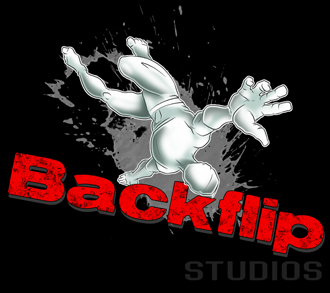
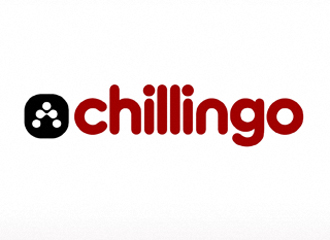
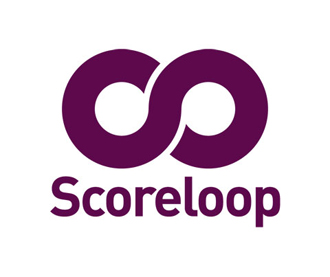
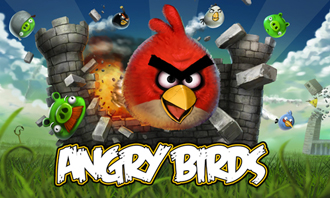
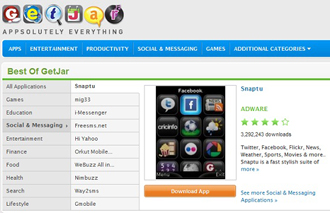

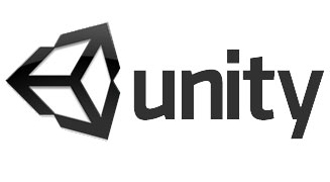

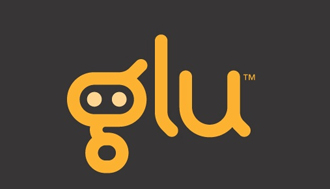
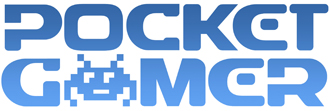














 闽公网安备35020302001549号
闽公网安备35020302001549号